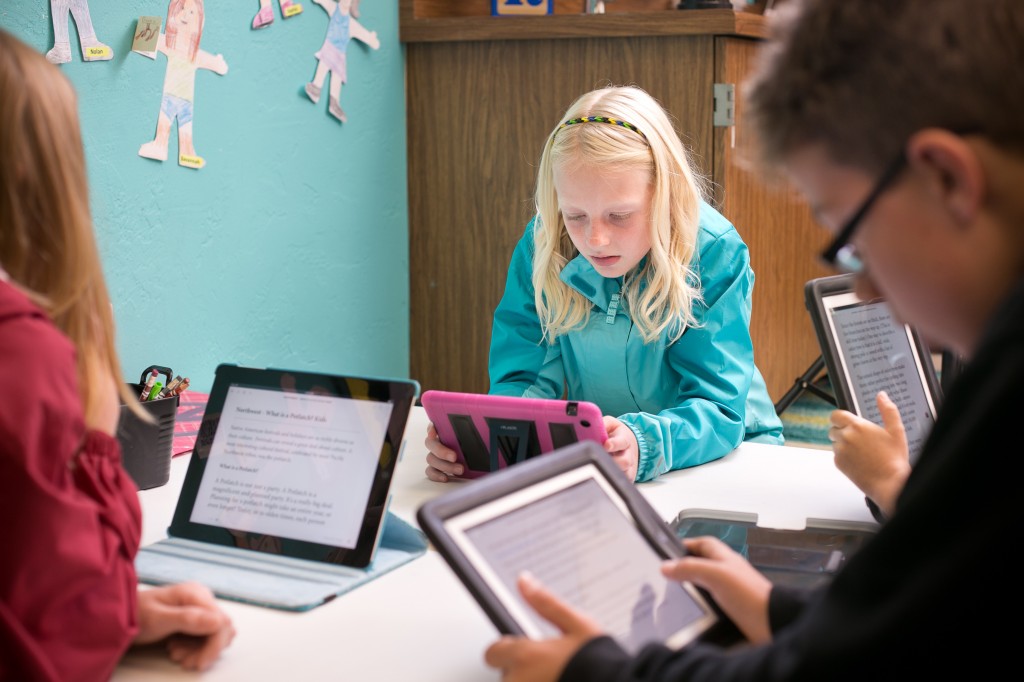Over the past several years, we at Subtext have talked to and observed teachers in schools at all different stages of technology integration. While some teachers have class sets of iPads or Chromebooks, others have only a few classroom computers, or access to a school computer lab. Despite these differences, we would submit a simple principle that helps teachers be successful in their efforts: When literacy instruction goes digital across the curriculum, reading can be transformed as it becomes more impactful, engaging, and effective for students. Here, we’ll share what this looks like when technology extends 6 tried-and-true reading practices, whether your classroom is fully digital or just exploring technology.

Highlighting Becomes Metacognitive
When students can explain “why” they are highlighting specific text, their thinking while reading becomes metacognitive but they also become more engaged readers. Digital tools like Subtext not only empower students to read more closely by highlighting, but also to add a concept “tag” that challenges them to justify why they are highlighting. Teachers who are used to “grading highlights” on paper can save hours of time and unlock powerful insights into students’ thinking while reading.
Differentiation Becomes Real Time
Being able to see reading engagement and comprehension data faster, means teachers can intervene, guide, and differentiate faster, enabling much stronger instruction in the ELA classroom as well as across the curriculum. A great example of this in practice is a teacher we know using Subtext with her fourth graders. She had prepared an exercise on the differences between metaphors and similes and had asked her students to identify the two in a short story. Via Subtext, she could see the students’ responses instantly and was able to immediately detect that two students in her class were clearly not understanding the difference between the two literary devices. Instead of interrupting the other students’ workflow, she approached the children who needed a little extra help individually or in her small-group breakouts.

Support Gets Personalized
Reading digitally lets you provide the right amount of support for students at different skill levels, all at the student’s pace. Almost all digital reading platforms have built-in dictionaries, which allow students to look up unfamiliar words with a single click or tap. Some also offer features that allow students to have words or phrases “read aloud” to them, or allow teachers to embed links and media in the pages of digital texts. Once links to background materials or popular vocab tools are brought right into the primary text, students get a richer understanding of a concept.
Close Reading Goes Collaborative
Citing text evidence, debating with their classmates, and writing can all be done directly in the pages of a digital text within digital classrooms. Practicing these skills in context bridges the gap between close reading and critical analysis, making it easier for students to make connections between the two. We frequently hear from teachers that collaboration in the text is the key to close reading: tackling more challenging passages is easier when students feel engaged and connected to the material in new ways.
Finding the Right Content Gets Simpler
Once a classroom goes digital and schools become more standards-focused, finding the right mix of curricular materials can become time-intensive for teachers. What could be as fun as making a playlist is overwhelming if you don’t know where to start. Digital tools like Gooru, Readworks and Subtext help bring a wide body of related materials together in a way that makes sense for your classroom. Many programs have whole curriculum teams behind them – made up of former and current teachers- so you have somewhere to start. Once materials are found digitally, they are much easier to distribute and materials that work spread quickly across districts, saving hours of photo-copying time and expensive PD.
Independent Reading Becomes More Transparent
The power of student-selected reading for increasing motivation and comprehension is hard to debate – especially when it comes to helping students develop a love of reading. But teachers and librarians know that a little guidance – on book selection, complexity and quantity – goes a long way towards affecting learning outcomes. In the digital classroom, teachers can set goals for students wherever they are: inside or outside the classroom. With tools like Subtext, teachers and librarians can keep a close eye on students’ progress and interests with insight into comments left in a book, words looked up, and even pages read per minute.
We’re sure we’ve missed some strategies that are enhanced or transformed by going digital. Let us know what reading strategies you’ve redefined in your classrooms and what tools you’ve used to help you accomplish your goals. Happy reading!

2 Comments
Pingback: Resources added to Diigo (weekly) | Beth Holland
Pingback: Weekly Resources for the End of February | Leading Change in Changing Times